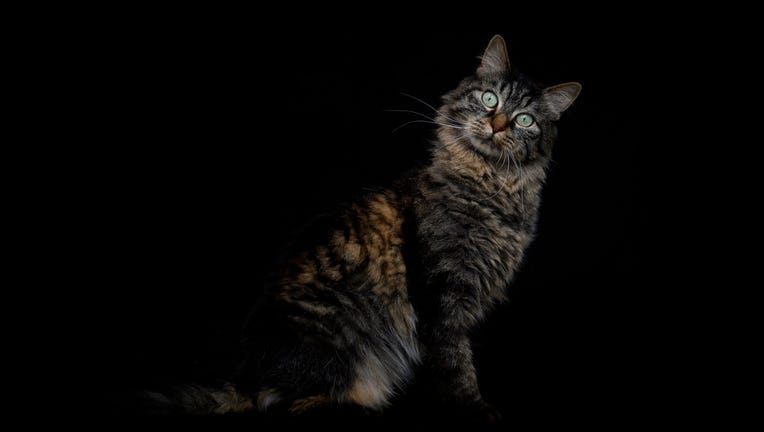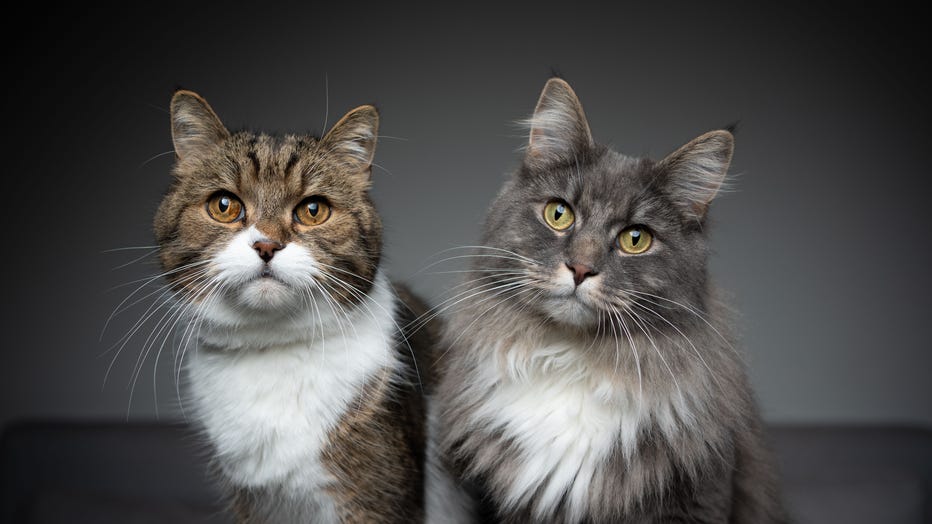Cats actually have hundreds of facial expressions, study finds

Camene, a 6 year-old cat, poses in the animal shelter of a SPA (society for animal protection) in Gennevilliers, a northwestern suburbs of Paris, on August 13, 2019. (Photo credit Olivier Morin/AFP via Getty Images)
The purrs and meows we all know and expect from our feline friends are known to be communicative to humans. But how do cats interact with each other?
By way of nearly 300 different facial expressions, a new study found.
Two U.S. scientists tracked and coded interactions between dozens of domesticated cats, and found the animals to have 276 facial expressions.
RELATED: Watch: Cat named Loki photobombs marriage proposal
Lauren Scott and Brittany N. Florkiewicz recorded hours of cat interactions at CatCafé Lounge in Los Angeles, and combed through their muscle movements and facial expressions using Facial Action Coding Systems (or FACS).
FACS is a complex, time-intensive process that captures subtle facial muscle movements that may otherwise be overlooked, which come together to create a single facial expression, Florkiewicz explained to FOX Television Stations. FACS have been released already for different animals, including horses, dogs, and even humans, she said.
Their findings were able to decode when cats’ facial expressions are more friendly or more aggressive.
"The key movements to look out for are movements of the ears, eyes, whiskers, and mouth," she explained. "When cats are friendly with one another, the ears and whiskers move forward towards the other cat. In non-friendly interactions, the ears move backward away from the other cat."
She said other notable things to watch for in non-friendly interactions are cats licking their lips or having constricted pupils.
Of the 276 noted facial expressions, about 47% were exclusively produced during friendly interactions and about 40% during non-friendly interactions, she added.
Knowing the differences can be especially helpful to people who are considering adopting another cat, or to shelters who would like to bring a cat into larger social groups.
RELATED: Watch: Kitten rescued after getting stuck in car dashboard trying to escape new owner
Where did these facial expressions come from?

Portrait of two cats of different breeds sitting side by side looking at camera. Getty Images
The study specifically looked at expressions produced by cats towards other cats.
"We were interested in how cats interact, as their facial expressions towards other cats may differ from those they use with humans," Florkiewicz said.
But humans still played a key role in this study – as it’s likely us that have shaped their facial expressions over the years through domestication.
"Cats are more socially tolerant and friendly towards humans and other cats than their wildcat counterparts. To help navigate these new friendly interactions, cats have acquired a large and diverse facial expression repertoire," Florkiewicz said.
Their study was published in October in the journal Behavioral Processes.
This story was reported from Detroit.

